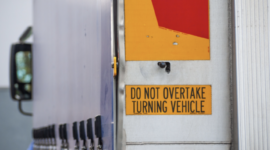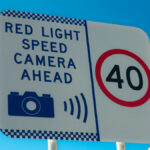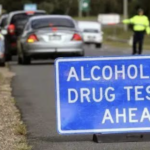When Does Overtaking Become a Traffic Offence in New South Wales?

Being stuck behind a slow-moving vehicle can be frustrating, especially if you are running late for work or a meeting, or have had a hard day and just want to get home.
But it’s important to be aware that unsafe overtaking not only poses a risk to you and other road users, but can put you on the wrong side of the law by resulting in a traffic fine or even land you in court for a major traffic offence such as negligent driving or even reckless or dangerous driving.
Here’s a rundown of the offences, penalties and defences that may apply to risky overtaking on New South Wales roads.
Overtake only when safe to do so
The overarching rule under the Road Rules 2014 (NSW) is that you must not attempt to overtake another vehicle unless it is safe to do so.
This rule is embodied in Regulation 140 of the Road Rules which makes clear that a driver must not overtake another vehicle unless he or she:
- Has a clear view of any approaching traffic, and
- Can safely overtake the vehicle.
Breaking this rule comes with a penalty notice of $387 and 2 demerit points at the time of writing, or a maximum fine of $2,200 if the driver elects (chooses) to take the matter to court.
In the event the driver takes the matter to court and then pleads guilty or is found guilty, he or she will be fined and accrue the same number of demerit points as in the penalty notice (which is 2 in this case) unless the magistrate deals with the matter by way of a non-conviction order such as a section 10 dismissal.
Needless to say, there will be no conviction for the offence if the driver takes the case to a defended hearing and there is a finding of not guilty.
Overtake to the left only if special circumstances apply
Under Regulation 141 of the Road Rules a driver (which excludes the rider of a bicycle) must not overtake a vehicle to the left of the vehicle unless:
- the driver is driving on a multi-lane road and the vehicle can be safely overtaken in a marked lane to the left of the vehicle, or
- the vehicle is turning right, or making a U-turn from the centre of the road, and is giving a right change of direction signal and it is safe to overtake to the left of the vehicle, or
- the vehicle is stationary and it is safe to overtake to the left of the vehicle, or
- the driver is ‘lane filtering’ on a motor bike.
Failure to follow this rule currently attracts a penalty notice in the amount of $215 and 2 demerit points, or a maximum fine of $2,200 if the driver elects to take the matter to court.
Overtaking to the right of a vehicle turning right
Regulation 143 of the Road Rules stipulates that a driver must not overtake to the right of a vehicle if that vehicle is turning right, or making a U-turn from the centre of the road, and is giving a right change of direction signal.
‘Turning right’ under this rule does not include making a hook turn.
Being detected for contravening this rule will lead to a fine of $302 and 2 demerit points, or a fine of up to $2,200 if the case is taken to court.
Overtaking ‘do not overtake whilst turning’ vehicles
Under Regulation 143(1) of the Road Rules, a driver must not drive past, or overtake, to the left of a vehicle displaying a ‘do not overtake turning vehicle’ sign if the vehicle is turning left and is giving a left change of direction signal, unless it is safe to do so.
Another offence is outlined under Regulation 143(1A) of the Rules, which provides that a driver must not drive past, or overtake, to the left of a vehicle displaying a ‘do not overtake turning vehicle’ sign unless:
- the driver is driving on a multi-lane road and the vehicle can be safely overtaken in a marked lane to the left of the vehicle, or
- the vehicle is turning right, or making a U-turn from the centre of the road, and is giving a right change of direction signal and it is safe to overtake to the left of the vehicle, or
- the vehicle is stationary and it is safe to overtake to the left of the vehicle.
And Regulation 143(2) states a driver must not drive past, or overtake, to the right of a vehicle displaying a ‘do not overtake turning vehicle’ sign if the vehicle is turning right, or making a U-turn from the centre of the road, and is giving a right change of direction signal, unless it is safe to do so.
Breaking any of these rules will attract a penalty notice of $302 and 2 demerit points, or a fine of up to $2,200 if the matter is taken to court.
Keeping a safe distance when overtaking
Under Regulation 144 of the Rules, a driver, when overtaking, must:
- pass the vehicle at a sufficient distance to avoid a collision with the vehicle or obstructing the path of the vehicle, and
- not return to the marked lane or line of traffic where the vehicle is travelling until the driver is a sufficient distance past the vehicle to avoid a collision with the vehicle or obstructing the path of the vehicle.
Failure to follow this rule carries a fine of $387 and 2 demerit points, or a maximum penalty of $2,200 if the matter is taken to court.
Following ‘no overtaking or passing’ signage
The Rules outline a number of offences related to overtaking when ‘no overtaking or passing’ signs are present including:
- overtaking a vehicle on a bridge or length of road to which a ‘no overtaking or passing sign’ applies (regulation 93); and
- overtaking on a bridge where a ‘no overtaking on bridge’ sign applies (regulation 94)
Failure to follow either of these rules comes with a penalty notice of $272 and 2 demerit points, or a maximum fine of $2,200 if an election is made to take the matter to court.
Overtaking at crossings
Finally, Regulation 82 of the Rules states that a driver approaching a children’s crossing, or pedestrian crossing, must not overtake or pass a vehicle that is travelling in the same direction as the driver and is stopping, or has stopped, to give way to a pedestrian at the crossing.
Breaking this rule comes with a penalty notice in the sum of $364 and 3 demerit points, or a maximum fine of $2,200 if the matter comes before a court.
Major traffic offences
And if the above offences aren’t enough, drivers should be aware that failing adhere to the standards of a reasonably prudent driver by having a passenger breach one or more of the above rules can potentially amount to the offence of negligent driving.
Negligent driving is considered to be a major traffic offence and the penalties depend on whether or not a person was seriously injured, or worse.
The following table lists the penalties for negligent driving offences:
| Relevant section | If you have been charged with… | The maximum penalty is… |
| S 117(1)(a) Road Transport Act 2013 | Negligent driving occasioning death | First offence: A fine of $3,300 and/or 18 months imprisonment. The ‘automatic’ period of disqualification is 3 years, but the court can reduce this to a minimum disqualification period of 12 months. The maximum disqualification is unlimited.
Second/subsequent offence: A fine of $5,500 and/or 2 years imprisonment. The ‘automatic’ period of disqualification is 5 years, but the court can reduce this to a minimum disqualification period of 2 years. The maximum disqualification is unlimited. |
| S 117(1)(b) Road Transport Act 2013 | Negligent driving occasioning grievous bodily harm | First offence: A fine of $2,200 and/or 9 months imprisonment. The ‘automatic’ period of disqualification is 3 years, but the court can reduce this to a minimum disqualification period of 12 months. However, the maximum disqualification is unlimited.
Second/subsequent offence: A fine of $3,300 and/or 12 months imprisonment. The ‘automatic’ period of disqualification is 5 years, but the court can reduce this to a minimum disqualification period of 2 years. The maximum disqualification is unlimited. |
| S 117(1)(c) Road Transport Act 2013 | Negligent driving NOT causing death or grievous bodily harm | A fine of $1,100. The court may also choose to disqualify you from driving for 12 months. |
In the event the driving conduct is alleged to be even more egregious, a driver may be charged with an even more serious major traffic offence such as reckless driving or dangerous driving, which carry even harsher maximum penalties.
Challenging an unsafe overtaking allegation
It is important to be aware that the onus rests on the prosecution to prove any of the above offences beyond a reasonable doubt.
That being so, those who believe that were on the right side of the law when it comes to a penalty notice can can apply for a review or, if this is refused, elect (choose) to take the matter to court and put the prosecution to proof; in other words, make them prove the allegations.
Additional arguments put forth in court when defending such allegations include:
- The offence did not occur as alleged, or at all,
- Someone else committed the offence (misidentification)
- The penalty notice is invalid, due to an error in or insufficiency of material particulars, and/or
- An emergency justified the violation or the conduct occurred as a result of being threatened with imminent serious harm.
It is important to carefully consider whether to elect to take a penalty notice to court, as it can result in a harsher penalty than that which comes with the penalty notice.
That said, a court also has discretion to deal with the matter by way of a non-conviction order such as a section 10 dismissal in the event you wish to plead guilty or are found guilty and seek leniency.
Getting a non-conviction order means there is no fine or demerit points.
Going to court over a traffic offence?
If you are you going to court to contest a traffic offence, call Sydney Criminal Lawyers anytime on 9261 8881 to arrange a free first conference during which one of our expert traffic lawyers will assess the case, advise you of your options and the best way forward, and fight for the optimal outcome.






